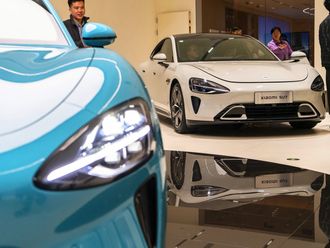The UAE is already a leading destination for tourists in this region, with the total numbers in 2015 reaching 14.2 million. Between January and August this year, Dubai had 11.37 million visitors, while Abu Dhabi 1.98 million visitors in the first six months.
These guests have been coming for a variety of reasons, primarily shopping, the desert, the beach, the quality and value of the hotels, the range and variety of foods and, of course, exhibitions and conferences.
Going forward, add to this list one more major set of attractions — theme parks.
Of course, Ferrari World with the world’s fastest roller-coaster in Abu Dhabi has been catering to visitors since 2010. With the recent opening of the IMG Worlds of Adventure — which features attractions based on Marvel Comics, The Lost World and Cartoon Network — and the coming set of parks on the Shaikh Zayed Road — Bollywood Park with attractions based on much loved Bollywood blockbuster movies; Legoland, every child’s fantasy land, Legoland Waterpark and Motiongate, which is a theme park with attractions and rides based on characters and films from Hollywood majors such as Sony Pictures, DreamWorks and Lionsgate — the whole concept of themed attractions is being taken to another level.
Then there is the soon-to-be-completed Dubai Eye Ferris Wheel, the tallest such in the world sitting on its own specially created island. And add to all of the above, the Dubai Safari, scheduled to open its gates by next year with an exquisitely planned — and I am sure the best executed animal park — in the region (calling it a zoo would be too limiting to its ambitions).
The expectation is that these multifaceted attractions will pull visitors from around the entire region like bees to honey. People who are looking at the UAE as a destination will now have many more options to choose from, and, of course, the same will be true for residents who are living here.
While all these developments give us much to look forward to, there could also be one concomitant effect. Over the last couple of decades, the main providers for entertainment in the country have been shopping malls and “shopatainment”. The malls have risen handsomely to the challenge with a plethora of exciting offerings from ski jumps to amazing kids’ entertainment zones and ice skating rinks.
Along with their extensive food offerings and movie multiplexes, many families have spent days just enjoying these delights and also, of course, shopping.
It is conceivable that a chunk of visitors will now find other avenues to spend their time, and their money within the new attractions. If we assume even 10,000 visitors a day for each of these parks, we are talking of 60,000-70,000 people who will not be in shopping malls.
Of course, if the ambition of extending the average number of visitor days beyond the current 3.6 happens, it may mitigate this effect to some extent. It does however call upon the leading developers to think hard about what other exciting new elements they can add to their properties to keep them fresh and appealing to hold on to the growth numbers of their daily and annual footfalls.
It also makes tougher the task for retailers in these malls to up their game and become even more attractive to visitors and local customers. Research has shown that retail stores maintain primacy as the place where people can interact with brands and experience products. Retail stores provide the place where people can make their decisions and get their products there and then.
Visiting a store and meeting with the sales associate still remains the most important factor in making the purchase decision, even in a world where so much more information is available online and on social media.
Retailers who work on personalising their approach to their customers will find success, developing their offerings on clearly based targeting to make them all the more preferred for their clientele. Besides sharp pricing, the emphasis needs to be on refining the shopping experience and removing any causes for unhappiness or customer dissatisfaction.
This increases the importance of product and brand knowledge and training of the team, so that they are able to provide the product experience on top of all the information that a customer already has obtained from online sources. It also pushes the retailer towards greater loyalty building.
The game is just getting a bit more interesting.
— The writer is a senior executive with a major retail group and these are his views.












